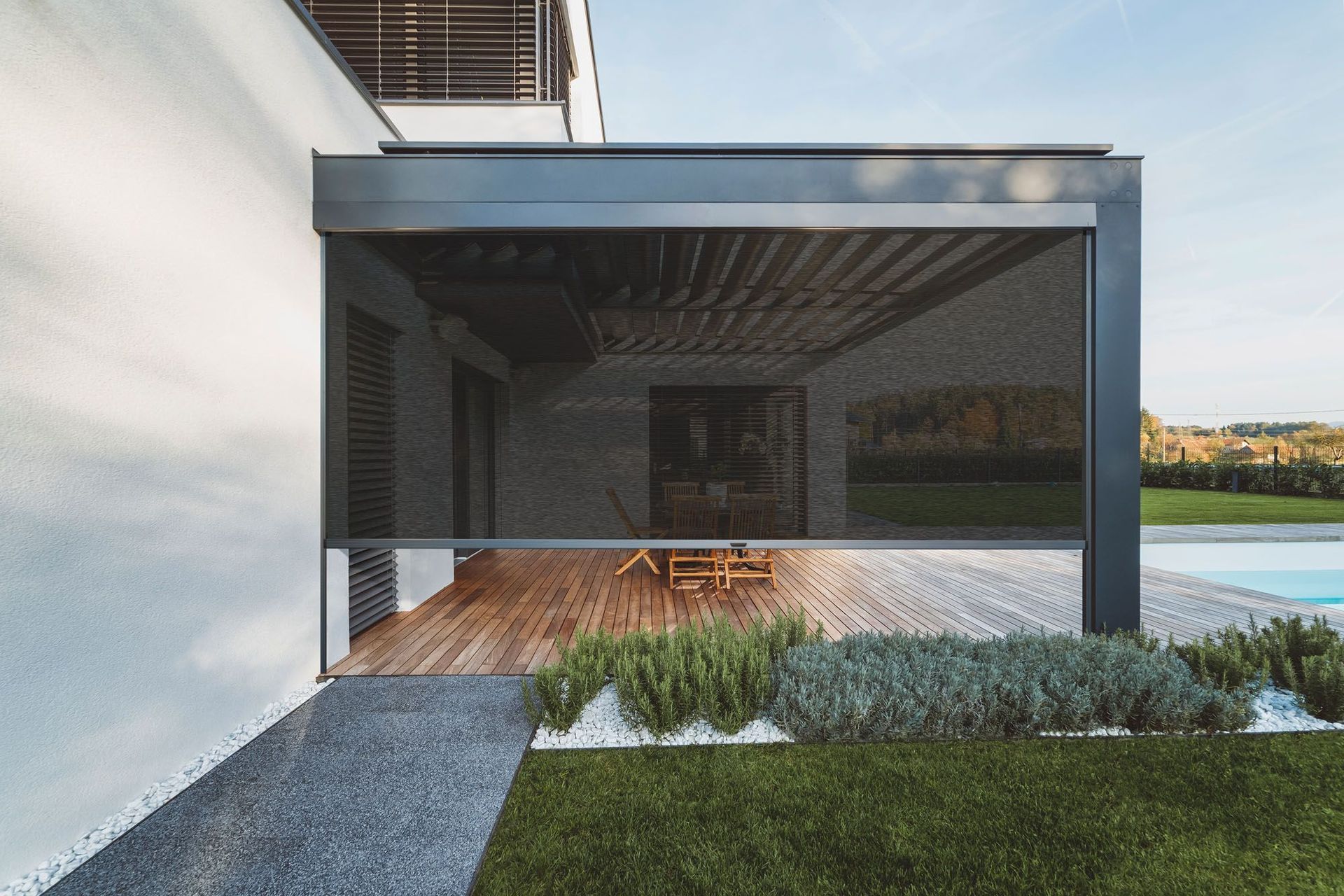How to care for your outdoor blinds in New Zealand
Written by
03 May 2023
•
6 min read

Outdoor blinds are regularly exposed to the elements including wind, rain and UV rays which inevitably take their toll on the product over time. While they are, of course, designed to withstand this to some extent, a certain level of care and maintenance is required to prolong their functionality. There are many things you can do to get ahead of this and it’s good to stay on top of it right from the outset to maximise their use.

How to stop outdoor blinds from blowing in the wind
It may be surprising to some to start off with such a specific aspect of their care but strong winds are a leading cause of damage to outdoor blinds, a factor that needs to be highlighted. If you live in a particularly windy part of the country, it’s something you’ll want to be especially mindful of because if you leave them to blow around in that wind, it won’t be long until they start to deteriorate.
Choose wind-resistant blinds
If you regularly get strong winds in your area then this is a given. While most are at least partially wind-resistant, there are some types of outdoor blinds that are definitely more resistant than others. Cafe blinds (or bistro blinds) are a good example of this as they are typically secured by tightly screwed wall anchors and zips, which is why they are usually the go-to choice for outdoor areas in the hospitality industry. The innovative Ziptrak blinds are another good option thanks to their cunning track-guided design while plantation shutters are another type that is robustly constructed to withstand the harshest elements.

Add a bottom railing system
If you’re working with an existing outdoor roller blind or similar, that doesn’t have a secure fastening mechanism, then you might be able to add a bottom rail or some kind of weighing system to keep it from constantly flapping in the wind. This will depend on the type of outdoor blinds you have which will need to be checked by a shade and shelter specialist, but it makes for a reliable fix that will look neat and tidy without intruding on the look of your outdoor space.
Use magnets or magnetic strips
If you want a quick DIY solution, then magnets or magnetic adhesive strips are choices you might want to consider. These are actually stronger than you might think and can cope quite well in some pretty testing conditions. The only thing to be mindful of here is how the adhesive will react to the mesh fabric or material used on the outdoor blind itself. If there’s potential for the chemicals to degrade the material then you might want to steer clear of it.
Secure them well during storms
As a preventative measure, you should always secure your outdoor shades and blinds well in advance of any type of storm. This will again mean different things depending on the type of blinds you have. For roller blinds, you’ll want to ensure they are all rolled up before the storm hits. For cafe or bistro blinds, you’ll want to check they are secured tightly to the base anchor. Some outdoor blinds may otherwise have tie-downs or straps. For people with modern motorised models, you may find they have wind-detection features which will retract the blinds as soon as the area exceeds certain thresholds. In this case, you just need to be sure they are activated at all times.
Related article: Different types of outdoor blinds for New Zealand homes

Maintaining your outdoor blinds
With the main issues regarding wind covered, it’s important to move on to other aspects that will affect the longevity of your outdoor blinds and the maintenance you should do to keep them looking their best. Many of these are intrinsic to any shade and shelter system so should hopefully make sense as you read down the list.
Clean them with care
Outdoor blinds should be cleaned with care, especially if they’re made from materials like fabrics and wood. A soft cloth and warm water (soapy if absolutely necessary) are often all that’s required to keep them looking good. Harsh cleaning chemicals can sometimes do more harm than good, especially in the long run. If you or someone else happens to stain it, try to deal with it quickly as it’ll always be easier to remove the stain sooner after the incident than later.

Repair damage quickly
If your blinds get damaged for whatever reason, it’s again important to deal with it as quickly as possible. Loose threads or tears in fabrics, for example, will impact the integrity of the blinds which could easily get worse leading to a situation that can’t be restored. With such repairs, you’ll most likely need the help of the professional who supplied the product as they’ll know the best way to fix it without compromising it any further. It also may still be covered by a warranty, in which case, it might not cost you anything at all.
Keep an eye out for mould and mildew
New Zealand is a humid country making mould and mildew a common problem that homeowners face. While most will be alert for this in the interiors of their homes your outdoor features and furnishings are also particularly susceptible. Be sure to keep an eye out for any signs of mould on your outdoor blinds, wiping them away with a soft brush and water as and when they appear. Drying them thoroughly after cleaning is also an important part of this process.
Be mindful of pests
While pests won’t be a problem for owners of aluminium or PVC outdoor blinds, they can be a nuisance for fabrics and wood options. One of the best ways to be proactive about this is to follow the first step and clean the regularly with care. Insects are often attracted to dirty surfaces so making sure they are free from debris will actually go a long way. Also, be sure to seal any cracks that might appear too as this will be an inviting opening for pests that you’ll want to guard against.
Related article: Shedding light on outdoor blinds: costs, installation and more

Prioritise the care of your outdoor blinds
As you can see, there are some important steps to follow to maintain your outdoor blinds to get the most out of them in the short and long term. With regular cleaning and proactive measures to stop blinds blowing in the wind, you’ll get a great return on investment allowing you to relax and enjoy the outdoor living experience in your home.
(This article was updated on the 3rd December 2024)
Discover an extensive range of stylish outdoor blinds on ArchiPro